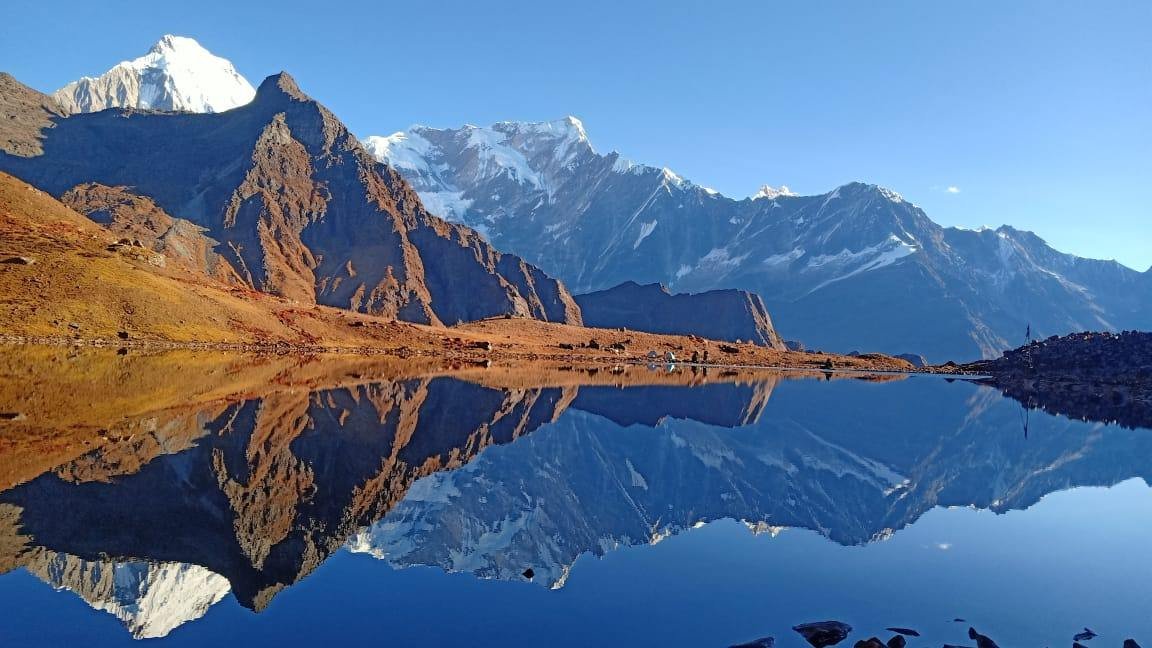Why Nepal Is the World’s Premier Trekking Destination (800–1,000 words)
Top 10 Trekking Routes in Nepal (2026 Edition) (5,000–5,500 words)
-
-
Annapurna Circuit Trek
-
Annapurna Base Camp Trek
-
Manaslu Circuit Trek
-
Langtang Valley Trek
-
Gokyo Lakes Trek
-
Upper Mustang Trek
-
Mardi Himal Trek
-
Poon Hill Trek
-
Best Time to Trek in Nepal (600–800 words)
-
Permits & Regulations Explained (400–600 words)
-
Trekking Logistics & Preparation (Training, Gear, Insurance) (1,000–1,200 words)
-
Culture, Teahouses & Altitude Acclimatization (700–800 words)
-
Sustainable & Responsible Trekking (500–600 words)
Trekking in Nepal: A Journey into the Heart of the Himalayas
Nepal isn’t just a country—it’s an experience etched into the soul of every traveler who dares to explore its rugged landscapes, breathe its crisp mountain air, and walk ancient trails once used by monks, merchants, and mountaineers. With eight of the world’s 14 highest peaks and a cultural richness that seamlessly blends Hinhttps://highpasstreks.com/du and Buddhist traditions, Nepal offers something truly unparalleled in the world of trekking.
In recent years, Nepal has firmly re-established itself as the world’s leading trekking destination. From the iconic Everest Base Camp to the untouched trails of Kanchenjunga, the country offers a diverse array of experiences that cater to all levels of trekkers—from first-timers to seasoned alpinists.
But why is Nepal the ultimate destination for trekking, especially in 2026?
1. Home to the Highest Peaks on Earth
Towering giants such as Mount Everest (8,848m), Lhotse (8,516m), and Kanchenjunga (8,586m) form the backbone of Nepal’s appeal. Treks like the Everest Base Camp, Gokyo Lakes, and the Three Passes route let you walk in the shadows of these immense mountains, offering views that postcards can’t quite capture. The sheer proximity to the Himalayas, the scale of the terrain, and the sense of humility it inspires—this is the magic of Nepal.
2. Trekking for All Levels
Whether you’re looking for a week-long moderate trek like Poon Hill or Mardi Himal, or an intense 3-week journey like the Manaslu Circuit or Upper Dolpo, Nepal caters to every skill level. The teahouse infrastructure means you can travel light, sleep in comfortable lodges, and focus on the trail—not logistics.
3. Cultural Immersion on Every Step
Trekking in Nepal isn’t just about nature. It’s about people.
As you walk through remote villages, prayer-flag-laced passes, and centuries-old monasteries, you encounter a unique mix of ethnic groups—Sherpas, Gurungs, Tamangs, Thakalis, and Newars. Every village tells its own story. Every meal—often a hearty plate of dal bhat—is an invitation to engage.
The Annapurna and Everest regions, in particular, are cultural mosaics, giving you insight into Tibetan Buddhism, mountain rituals, and resilient lifestyles shaped by centuries of high-altitude living.
4. Safe, Accessible & Budget-Friendly
Trekking in Nepal is relatively affordable compared to other mountainous regions. With a network of domestic flights, jeep routes, and helicopter options, getting to trailheads is easier than ever. Nepal also offers a robust trekking support industry with licensed guides, porters, and agencies ensuring both safety and authenticity.
And if you’re concerned about solo travel, rest easy: thousands of trekkers—solo, in groups, or with guides—explore these routes each year. With improvements in satellite communication and route mapping, you’re never truly alone, even on the remotest trails.
5. 2026: A Landmark Year for Himalayan Travel
2026 will be a particularly great time to visit. After years of post-pandemic recovery, trail systems have been improved, new eco-lodges are opening, and local tourism boards are actively promoting sustainable trekking. You’ll find upgraded amenities in places like Namche Bazaar, Ghorepani, and Manang, but without the overcrowding seen in pre-2020 years.
Additionally, the growing awareness of responsible tourism has resulted in cleaner trails, better waste management, and more ethical trekking operations. It’s a fantastic time to support community-based travel while enjoying pristine Himalayan scenery.
6. The Spiritual Element
Whether you’re religious or not, trekking in Nepal evokes a spiritual connection. Prayer wheels spin gently in the wind, mani stones line your path, and mountains themselves are considered sacred. Time slows down. Your heartbeat syncs with the trail. It’s not just about physical endurance—it’s about clarity, connection, and contemplation.
7. Diversity of Landscapes
Beyond the snowy giants, Nepal surprises with its incredible geographic diversity. Trek the rain-shadow deserts of Upper Mustang, the alpine lakes of Gokyo, or the rhododendron forests of Langtang. Each region has its own ecosystem, climate, and visual identity. Even within a single trek like the Annapurna Circuit, you’ll move from subtropical valleys to glacial zones.https://highpasstreks.com/
8. A Trek for Every Season
Most treks are best between March–May (spring) and September–November (autumn), but thanks to its geographic variation, Nepal also offers off-season options. Consider the rahttps://highpasstreks.com/in-shadow zones like Upper Mustang in summer or lower-altitude treks like Pikey Peak and Tamang Heritage Trail in winter.











